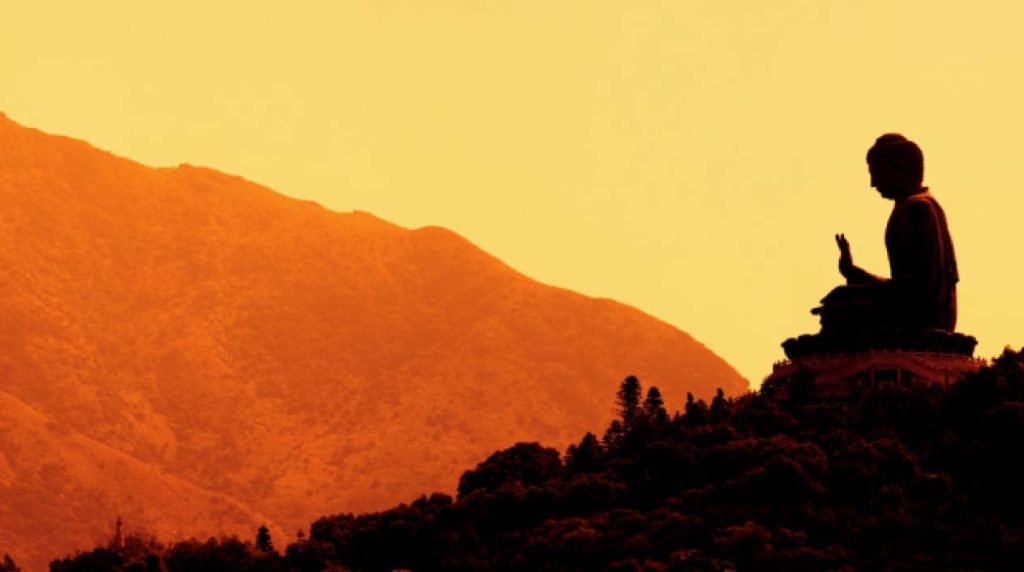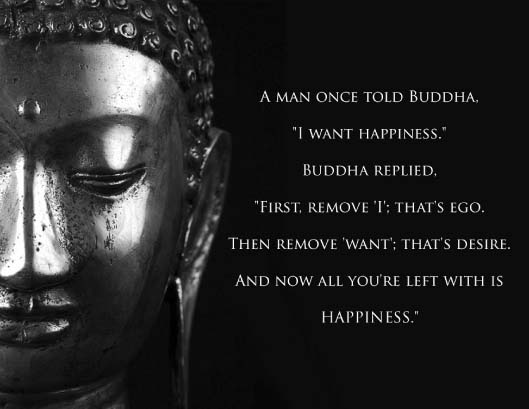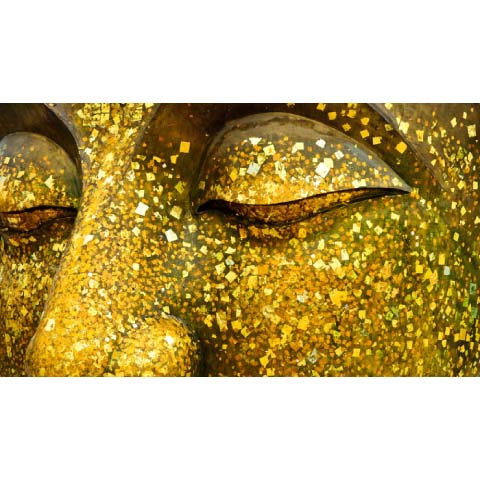 People are always left dumbfounded when told I had stayed for almost a year in a Tibetan Buddhist nunnery.
People are always left dumbfounded when told I had stayed for almost a year in a Tibetan Buddhist nunnery.
It was a semi-retreat setting, and although I am not disclosing my routine, one question asked by most people deserves an answer – why?
If a business partner perceives Buddhism as praying monks, and he measures praying in terms of time and money, l get an “oh, you’re a prayerful, honest boy” look. I am not.
If an aunt perceives Buddhism as how it is portrayed in Dr. Strange – where the hero meditates and trains to have nature-defying powers – she excitedly asks me if I can read her mind, levitate or produce fire from my bare hands. I cannot.
If a high school friend perceives Buddhism as an eternalizing, philosophical subject, I am seen as a “deep” philosophizer who has shunned daily, worldly affairs. I have not.
However, I have always contended that Buddhism, and retreat, for people like me is a major game-changer.
I arrived at this single-minded conviction after struggling for almost a decade, attempting to balance Buddhist theories with fulfilling my basic material needs, and endeavoring to placate the anxiety of those who are concerned for my career, welfare, and life.
Definition of a Buddhist retreat
Retreat is a spectrum. Although there are formal retreat settings like the three-year retreat in the Kagyu tradition of Tibetan Buddhism, there is a wealth of choices. It can be as short as one day or as long as a lifetime.
The content of a retreat varies as widely as the length of time one undertakes. In essence, a retreat is done to have time away from daily preoccupations.
Also, based on endless retreat manuals, and from my personal experience, a master is essential in any retreat. Thus, I consider the “off-period” I took starting last year “almost” a retreat because of two definitions: it was guided by a master in a nunnery, and every single day was purposely freed from mundane preoccupations.
Foundations of retreat in Buddhism
What I will be sharing are the “ideal” motivations behind a Buddhist retreat. Many people who heard of my experience have either labeled me as a monk, a spiritual person or a philosopher. I detest these labels. For me, these terms connote meekness, escapism, Zen and uselessness in worldly matters. Doing retreat in Buddhism is anything but.
One of the foundational pillars of Buddhism, unbeknownst to the majority, is to convince oneself that one will die, and one’s impending death is unpredictable.
In fact, most, if not all, of our daily activities are endless delaying distractions from accepting such truths. Even the occasions closest to them, funerals and burials, are engulfed with too much grief, or are quickly turned into social events.
In a retreat, we are isolated from “the realities of the life,” but we contemplate life’s most basic truths. Devoid of fear, anxiety and taboo, we contemplate until experiential understanding of it sinks into the marrow of one’s bones.
While our daily to-do lists and taboos shy away from the reality of death, retreat does the opposite. Imagine gaining familiarity with the reality of death. That will eventually make one unshakeable like a mountain. Hence, Buddhist retreat is anything but meek.
Renunciation
Another pillar of Buddhism that is familiar to many, but heavily misunderstood – is the renunciation of worldly affairs and life itself (Mandarin: chu li xin 出離心; Tibetan: nge jung).
What we normally consider “right” living is celebrating life (the new baby and birthdays) while grieving over death (especially the horrific and sudden). Our daily activities consist of working for four aspects: praise, joy, gain and good reputation, while running away from their halves: criticism, sadness, loss and infamy.
In retreat, these five pairs (including life-death) are contemplated as defiled (Mandarin: you liu 有流; Tibetan: zak che). One Buddhist master stated matter-of-factly: “If people detest death, they should not celebrate birth, because birth is the real cause of death.”
As for the remaining four pairs, why defiled? The negative ones are self-explanatory. They hurt. Meanwhile, the “satisfaction” from the seemingly positive ones fade.
In other words, whatever success/joy/praise/attention one has experienced, after some time of basking under its glory, one slowly starts to feel inadequate again. That eventual restlessness, because the success it stems from is an over-promise, makes the success “defiled” or unreliable. In retreat, the retreatant investigates and questions their real nature. He tries to experientially understand that all the five pairs are inseparable in their nature of dissatisfaction and anxiety (Mandarin: tong ku 痛苦; Tibetan: dug ngel).
In our daily activities, we indulge in their temporary “highs” and “lows,” like drinking salt water. We know they do not satisfy, but we continue chasing them anyway. Retreat is deliberate confrontation of the unsatisfactory nature of daily living. The understanding that both sides are overpromising, and lessening our reliance on them, is renunciation. Retreat is anything but escapist.
 Compassion
Compassion
Yet, another Buddhist pillar is compassion, a word already very much associated with Buddhism but incompletely understood. Compassion (Mandarin: ci bei xin 慈悲心; Tibetan: nying je) in Buddhism is all-embracing. What is lacking in most people’s understanding of Buddhist compassion is wisdom. Wisdom is to see “emptiness of self.” Since that is an elusive term, wisdom can also mean understanding Samsara (Mandarin: lun hui 輪迴; Tibetan: kor wa) – the cycle of never-ending suffering.
In retreat, meditating on compassion involves generating single-minded sympathy for all life, as we all have to go through birth, sickness, aging and death. Also, we encounter problems we do not want, we lose the things we want, we are worried by not achieving the good and worried by getting the bad. We traverse this problematic cycle endlessly.
We may try to outsmart it with money, career, relationship, self-help ideas, “life hacks,” and even religion and faith. But try as we might, we still find ourselves having a “bad hair day,” again and again. That is what is meant by Samsara.
In our daily engagements, we engage in activities primarily to fulfill our self-centered interests. In retreats, we think less about “my” needs and slowly disentangle from constant self-centeredness. We contemplate the same sorrowful state experienced by the president down to the homeless.
Retreat is to dive into and empathize with every living being’s “bad hair day,” small and large. For the retreatant, that means the chaotic and emotion-ridden, not Zen.
Common denominator: Self-centeredness
Most of our external preoccupations – the things we buy, the arguments we get involved in, the adulations we vie for – mirror the flowing and ebbing of our inner tidal waves – cravings, anger and misunderstanding.
These inner tidal waves stem from our innate self-centeredness (Mandarin: zi wo 自握; Tibetan: dak dzin). Ironically, by isolating oneself in retreat and contemplating the abovementioned pillars, one’s self-centeredness is revealed in the open and tamed.
In Buddhist thought, the bad news from outside may not be “solvable” by going to retreat. But these outside news become “troubling” to us because they trigger our self-centeredness. We fear and feel uncertainty, are consumed by anger, and become hopeless. That is innate self-centeredness.
Meditating on one’s death, renunciation, and compassion all lead pretty much out of the same tunnel – innate self-absorption.
Conclusion
“Meekness,” “escapism,” “Zen” and “uselessness” are very common adjectives easily imputed to the concept of Buddhist retreat. That’s understandable from the viewpoint of our daily engagements, because retreat looks like shying away to an isolated, calm oasis that is disengaged from the mess of the world.
However, from the viewpoint of Buddhist retreat, all these so-called “mess of the outside world” are strongly linked to our unruly, egocentric thinking governed by endless cravings, anger and misunderstanding.
Therefore, a retreat guided by a qualified master is actually a deliberate, confrontational, chaotic and effective engagement with another aspect of this “mess” which our daily solutions usually brush through and miss. That seems to be the paradox of a Buddhist retreat.
